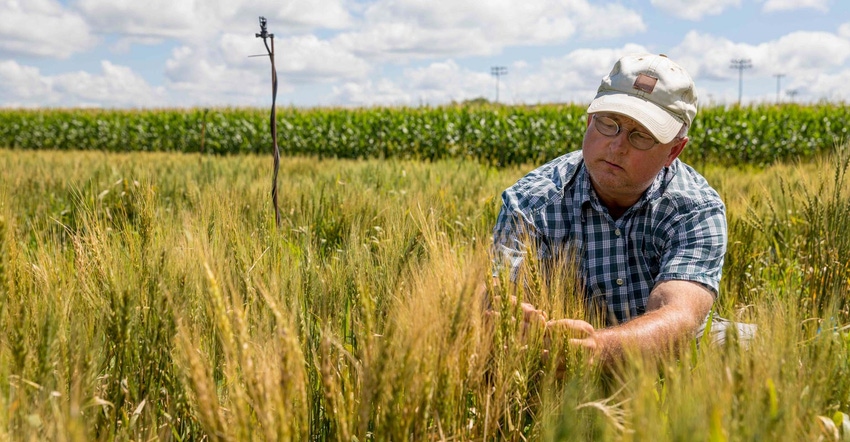October 2, 2020

Wheat breeders at South Dakota State University will have a new weapon to fight scab, thanks to funding from the Agricultural Research Service through the U.S. Wheat and Barley Scab Initiative.
Winter wheat breeder Sunish Sehgal and spring wheat breeder Karl Glover are buying a near-infrared seed sorter that can quickly identify and remove seeds damaged by Fusarium head blight (FHB), also known as scab. The machine also can sort by color, size and protein content using 2D and 3D cameras, as well as near-infrared spectrometry, which measures reflected light.
Each wheat breeder receives about $100,000 annually through the scab initiative, but this year’s allotment contained additional funding to buy the seed sorter. Glover’s 2020 grant is for $166,930, and Sehgal’s is for $191,000. The wheat breeding programs are part of the South Dakota Agricultural Experiment Station.
“We are the first wheat breeding program in the United States to acquire this state-of-the-art machine,” says Sehgal, who is an associate professor of agronomy, horticulture and plant science. “The instrument will not only sort good kernels from bad [Fusarium-damaged], but gives us the percentage of good kernels for each variety.”
Glover, a professor in the agronomy, horticulture and plant science department, says, “This machine will do hundreds of seeds a minute and will help in terms of screening lines we are developing.” It not only saves time, but also eliminates the variability inherent in manually sorting and counting kernels.
In addition, Sehgal plans to work with the Swiss company that manufactures the sorter to develop a means of identifying seeds that have scab mycotoxins growing inside them. “These kernels cannot be caught unless you do a DON [deoxynivalenol mycotoxin] laboratory analysis," he says. "However, quantifying DON content using mass spectrometry is an opportunity that we wish to explore."
Previous studies have shown some promising results using near-infrared imaging.
Increasing scab resistance
Sehgal also is collaborating with wheat breeders at Ohio State University and the University of Nebraska-Lincoln to use genomic data to predict scab resistance without testing all varieties. “We are doing 200 tests in two different locations and using the data to predict how 400 to 600 varieties will fare," Sehgal says.
Years of research worldwide resulted in the identification of several minor and a few major FHB resistance genes, but the underlying mechanism of resistance was largely unknown.
However, a few studies recently have suggested some of these genes actually facilitate Fusarium infection in wheat. Therefore, loss of function in these genes could lead to resistance, Sehgal explains.
“We are developing EMS [ethyl methane sulfonate] mutation populations to identify lines in which gene[s] utilized by Fusarium for infection are truncated or silenced leading to a resistance response,” he says.
These projects are supported the Wheat and Barley Scab Initiative and the South Dakota Wheat Commission through checkoff funding.
Source: SDSU, which is solely responsible for the information provided and is wholly owned by the source. Informa Business Media and all its subsidiaries are not responsible for any of the content contained in this information asset.
You May Also Like




